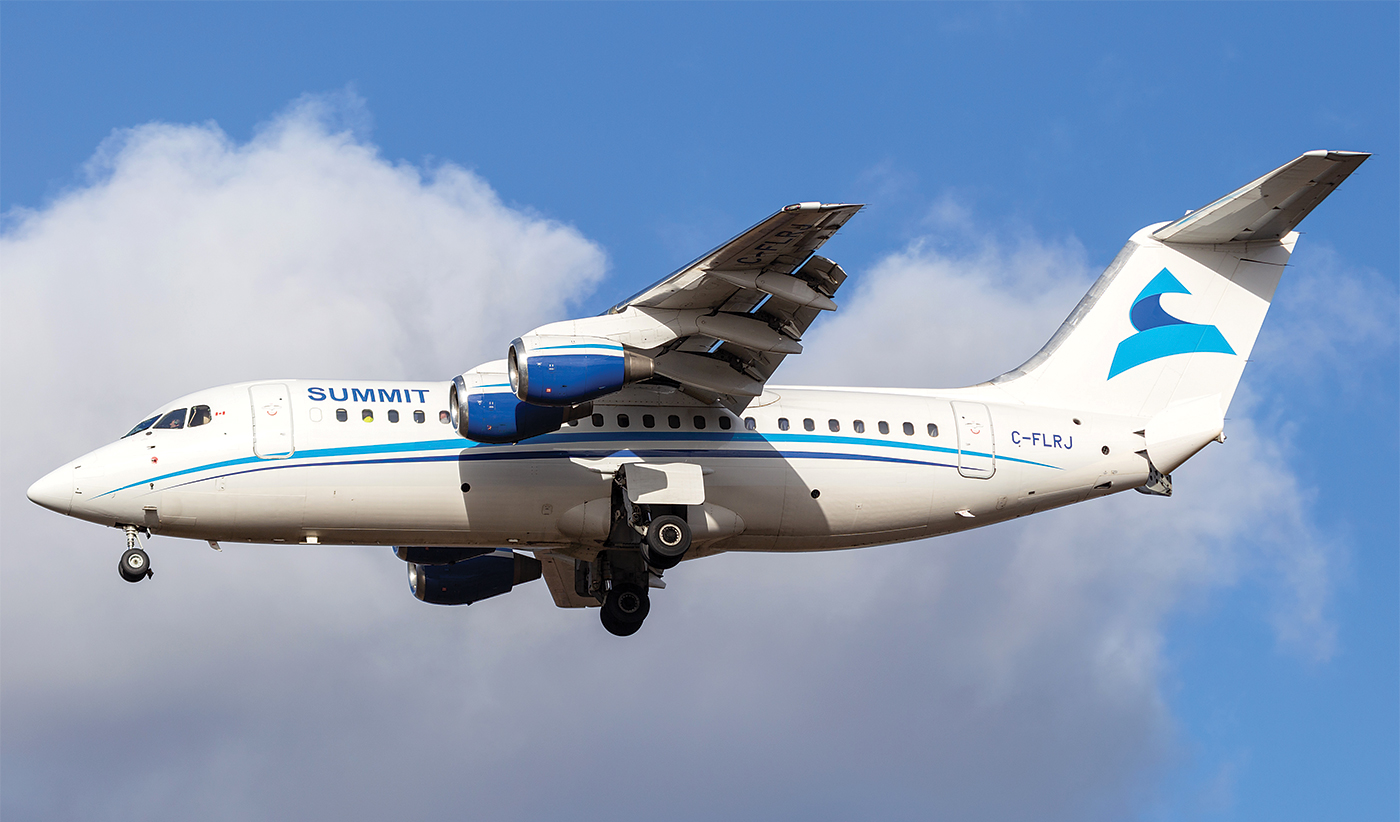Estimated reading time 15 minutes, 33 seconds.
When Caroline Cochrane was elected premier of the Northwest Territories (NWT) on Oct. 24, 2019, she vowed to “make this next four years the most progressive government” the territory has ever seen.
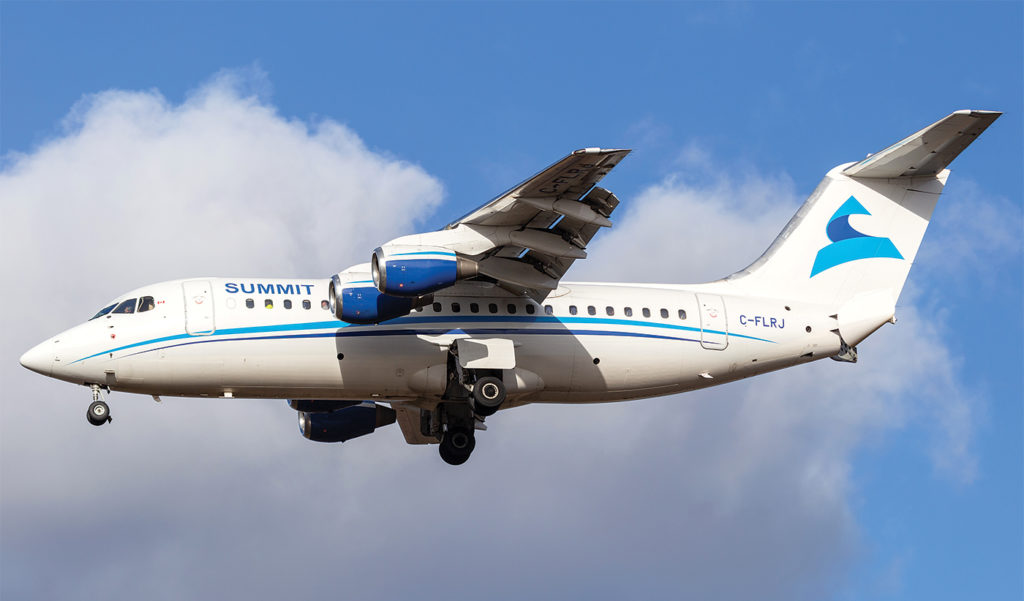
Led by Cochrane, the 19th Assembly promptly released its 2019-2023 Mandate of the Government of the Northwest Territories, a wide-ranging document that promises to tackle important issues such as affordable housing, increased employment across the region, economic diversification, universal childcare and education.
The government also said it will be aiming to increase resource exploration and development in the NWT.
“Renewed exploration activity is needed to restore levels of investment, partnership, employment, and growth in the NWT’s economy,” reads the mandate. It includes a promise to increase funding for mining incentive programs by 50 per cent over the next four years.
That is welcome news to the territory’s aviation industry, which has traditionally prospered by supporting mining and exploration activities.
In recent years that activity has slowed and there has been downward pressure on commodity prices. Companies such as Yellowknife-based Summit Air have been feeling the ripple effects. The reduction of a traditional revenue stream has led companies to adopt diversification by necessity, with many adjusting their fleets as well as their focus.
“It’s still a problem in the North,” said Myles Cane, Summit Air’s senior vice-president Operations. “Across the territories there is a big slowdown in exploration and that continues to drive change.”
For example, Summit’s last DHC-6 Twin Otter aircraft was sold in February of 2019. It marked the end of an era for the 20-year-old operation, which was purchased in 2009 by the Ledcor Group of Companies. (Ledcor also owns Summit Helicopters and operates the Vancouver Harbour Flight Centre.)
“The economics aren’t there,” said Cane. “That aircraft has been part of the DNA of this company for a long time. One of the Twin Otters, in fact, had operated in the NWT its entire life, starting with Wardair in 1971. It was a difficult decision and one we didn’t make in a rush.”
Selling the Twin Otters is just one example of how Summit Air is redefining its northern aviation offerings.
In July 2015, the company welcomed its first ATR 72 aircraft, configured to carry 68 passengers. A second passenger aircraft was added later that year, followed by three ATR 72 freighters. In December 2016, Summit fielded its ATR 72 large cargo door freighter, a US$2.3 million project that saw the aircraft undergo six months of refurbishment and conversion by IPR Conversions Ltd. of Toulouse, France.
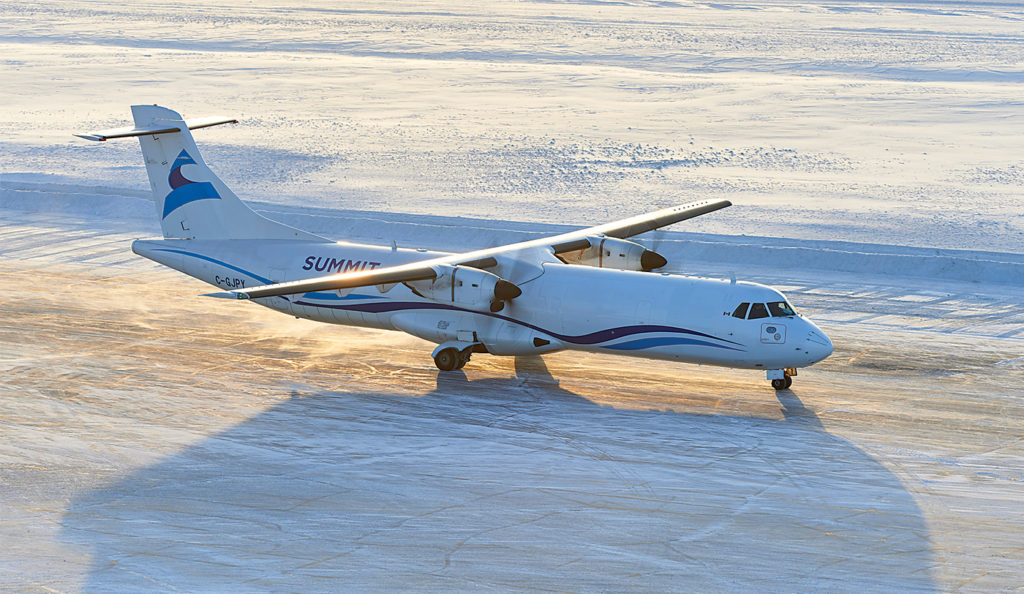
“The ATR 72 delivers market leading economics for both freight and passengers given its favourable fuel burn and operating costs,” said Cane. “They are very busy. The [large cargo door freighter] can fit five 108 x 88-inch cookie sheet cargo pallets, allowing for a diversity of freight. It can be groceries, equipment, etc. The door opening measures 119 x 71 inches.”
Today, Summit Air’s fleet flies about 12,000 hours annually and includes 17 aircraft: two Short Skyvans, five Dornier 228s, one Dash 8-100, five ATR 72s (two in passenger configuration and three freighters, one of which has the large door), two Avro RJ85s and two Avro RJ100s.
The aircraft are spread between Summit Air headquarters in Yellowknife and its bases in Edmonton and Calgary, as well as satellite operations in Thompson, Man.; Mary River, Nunavut; Thunder Bay, Ont.; and Oxfordshire, U.K.
Cane said the company has developed some solid partnerships with major grocery and retail distributors, as well as continuing to provide ACMI [aircraft, crew, maintenance and insurance] charter services to other air carriers. For example, Summit’s 37-seat Dash 8-100 is currently contracted to perform scheduled and charter passenger service.
“There really is a diversification strategy,” he explained. “We continue to support the local mines, but it’s no secret that even with potential new mines on the horizon, they don’t represent the same scale of business that we have enjoyed over the past decade.”
According to North of 60 Mining News, two of the NWT’s three diamond mines are set to close sometime in the next decade. While the third is expected to yield diamonds well into the 2030s, the mining industry publication said the focus will necessarily shift to smaller (and less profitable) operations harvesting zinc, cobalt and rare earth elements.
The declining diamond output in the NWT is predicted to slow the territory’s economy. Hence the Cochrane government’s focus on not only encouraging mining exploration and development, but also expanding the NWT economy and creating jobs.
Indeed, diversification is the name of the game for many companies in the territory today. In addition to new partnerships outside its traditional frame of business, Summit Air launched a new direct-to-consumer freight business serving the Mackenzie Valley last July. Twice a week, the company’s freight division, Summit Air Cargo, transports goods from Yellowknife to four communities in the Sahtu Region: Norman Wells, Fort Good Hope, Deline and Tulita.
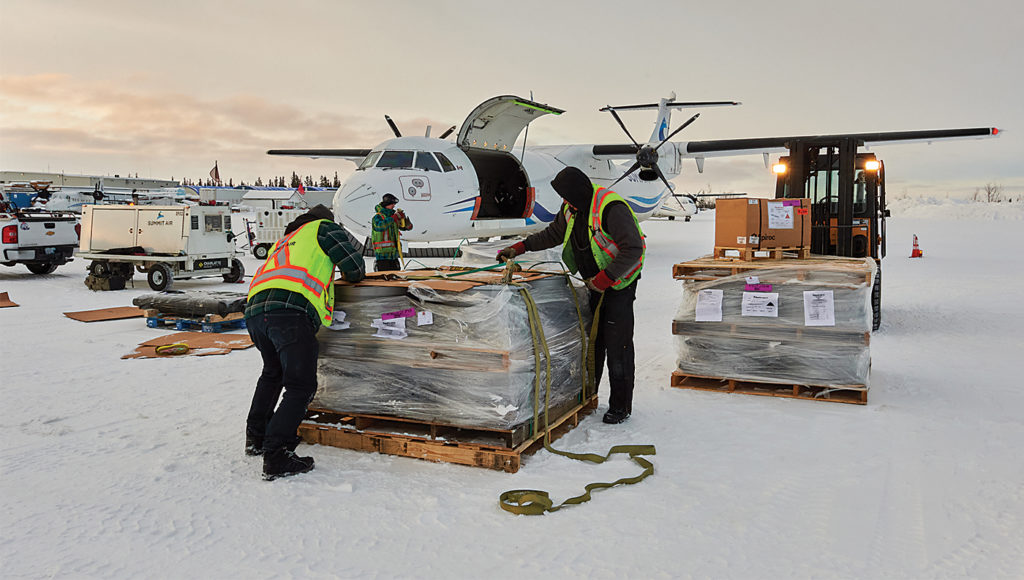
“Until that started, the general public typically wouldn’t interface with Summit unless they chartered an aircraft,” explained Cane. “But now, the public has the ability to ship packages on our flights. It’s a new piece of business for us, and it involves community interface. It’s been a good opportunity that has already proven successful for us since we launched last summer.
Summit Air is expanding within Canada, too, through its bases in Edmonton and Calgary. Cane reported the company is now serving a variety of energy sector clients.
“Since expanding our footprint in Alberta, our client base has diversified significantly and we are now doing regular charters across B.C. and Alberta in support of energy clients, as well as leisure-related weekend trips and tourism flights.”
Enter the Avros
Perhaps no one jet airliner is as legendary in the Canadian North as the Boeing 737-200. First rolled out in 1967, the plane was unique because it boasted an optional gravel kit with nose gear deflector and engines that directed bleed air in front of the inlet to deter foreign object ingestion. By the early 2000s, most airlines had replaced the 737-200 with newer aircraft – but the older workhorses are always welcome in Canada’s North, in part because they can operate from unpaved airfields. The aircraft are also approved to fly in a combi configuration, with both passengers and cargo.
But at more than 50 years old, the 737-200 can’t fly forever. Many northern operators have begun considering the venerable aircraft’s successor.
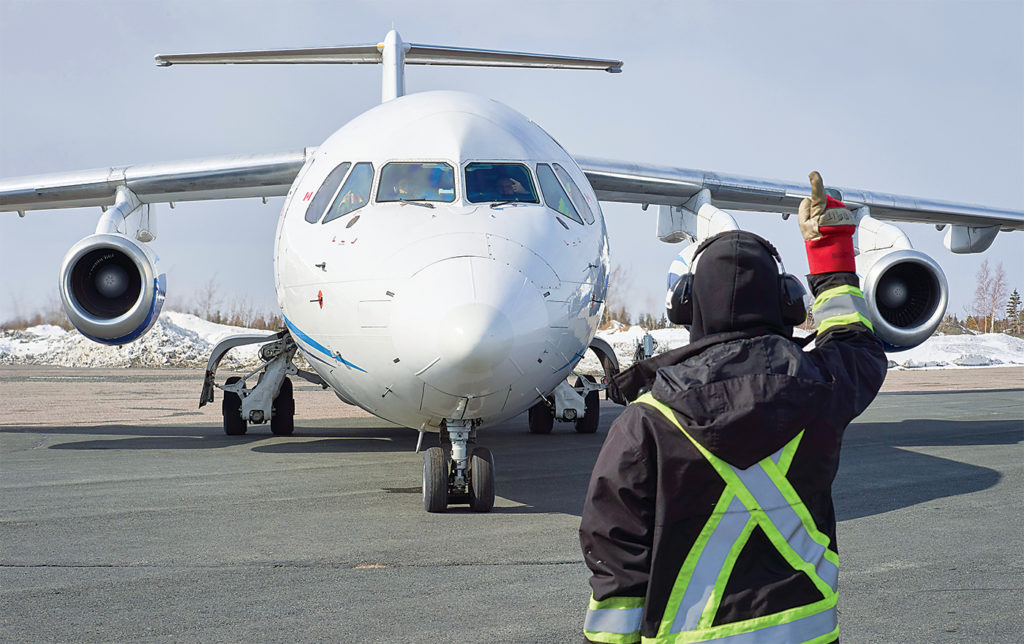
In 2014, Summit partnered with Dene-owned Det’on Cho Logistics and First Air to operate a four-engine Avro RJ85, mainly to fly staff from a diamond mine to Edmonton.
Cane said Summit, which shouldered the financial cost of certifying the RJ85 for gravel operations, “took a bit of a leap of faith.”
But the aircraft’s success is proof that the RJ85 makes both operational and financial sense in the North.
“It’s turned out to be a successful investment for the airline,” he continued. “Since we certified the RJ85 aircraft on gravel, we now perform work for all the mines in the NWT.
“When we first launched the RJ85, we were hopeful to get some of the work and we ended up with all the jet-based, fly-in fly-out work in the Western Arctic. It’s fuel efficient, very tough and rugged, and has proven to be operationally capable in inclement weather and harsh locations.”
Today, Summit operates four of them – two RJ85s with 90 seats and two RJ100s with 111 seats. Luckily, Abbotsford, B.C.-based Conair now has an Avro RJ simulator, so Summit pilots no longer travel to Europe for initial and recurrent training. Additionally, Transport Canada has issued a common type rating for the RJ85 and RJ100, allowing for training efficiencies.
With an all-high-wing fleet, Summit Air incurs less gravel damage but it must still take precautions.
For its ATR fleet, the operator invested considerable resources in covering the turboprops’ bellies, tails and landing gear with three different types of cushioned 3M vinyl film, as well as rock deflectors behind the nose wheels. Cane said Summit is currently developing an external guard to cover the main landing gear.
“Truthfully, though, the biggest and best safeguard against gravel damage is the pilots – they know how to operate the aircraft without incurring propeller damage,” he explained. “How they handle the aircraft on the ground is critical. It’s the small airmanship elements like not parking the aircraft downwind, not parking uphill or on soft ground. Try to keep the aircraft rolling all the time. Don’t come to a stop and turn the nosewheels . . . there is a long line indoctrination process for new pilots and they do a great job.”
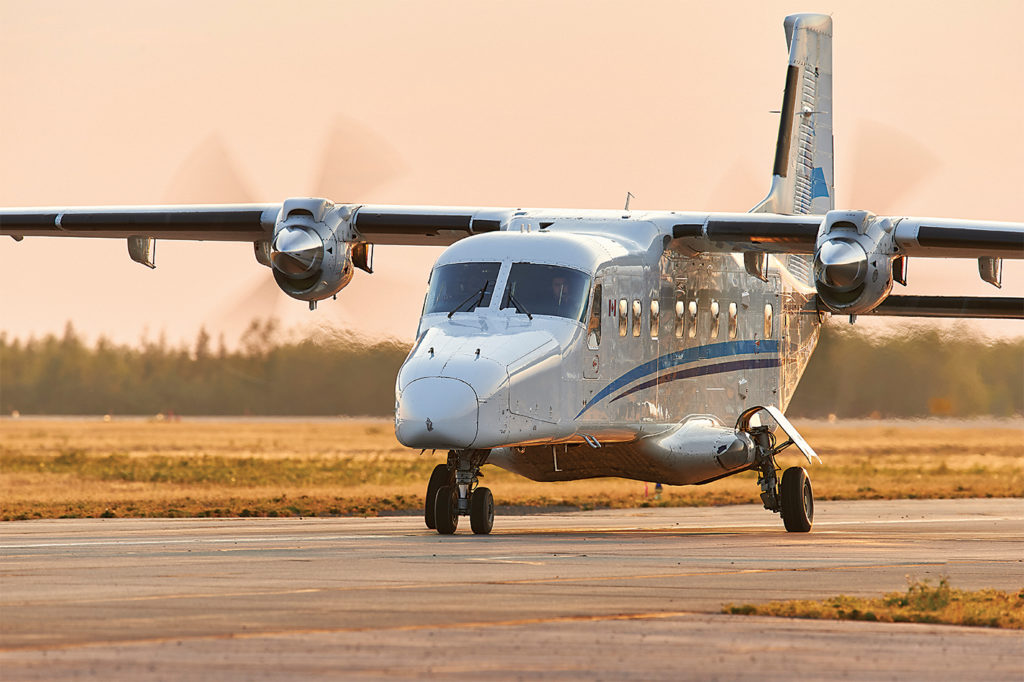
Come for adventure
A Summit Air recruitment video encourages prospective pilots to “come for the adventure, stay for the career.”
Some pilots just love the North, said Cane, who added that these are usually more senior flight crew who appreciate the chance to be home every night. He himself began working as a pilot for Summit Air Charters in 2007, and he can’t imagine living or working anywhere else.
“The skill levels and the experience built in the Arctic are second to none. For some of us, we end up staying here because we love the environment so much.”
But he noted that entry level and early career pilots have more options now, and not everyone wants to go north.
Like other northern operators, Summit Air has felt the pinch of a tightening labour market, although Cane admitted the “trickle down” effect of the 737 Max grounding has slowed the hiring at the majors.
He reported that Summit seems to be meeting the staffing challenge with the help of parent company Ledcor, and credited the company’s efforts to attend pilot fairs and create videos that illustrate the job and the northern lifestyle.

Overall, he said the company employs about 65 pilots who tend to stay with Summit for an average of five to six years.
“We’re trying to appeal to their sense of adventure. It seems to me we’ve struck a chord.”
In the hangar, Summit Air is starting to see a shortage of aircraft maintenance engineers (AMEs).
Cane – who is also an AME – said it presents an opportunity for Summit to grow its own maintenance professionals from apprentices, just like in the “old days.”
While Summit’s AME turnover is low, the company’s expansion has created openings, including at its Edmonton and Calgary bases where jet maintenance is performed.
“It’s been tough to fill positions lately because there’s a lot of opportunity out there. To fill the gap, we will be focusing our recruitment efforts on AMEs with videos and significantly more outreach.”
Operational challenges
While staffing is the biggest hurdle for Summit at the moment, Cane also said higher costs in the North – both for employees considering relocation and company operations such as parts sourcing – is another challenge.
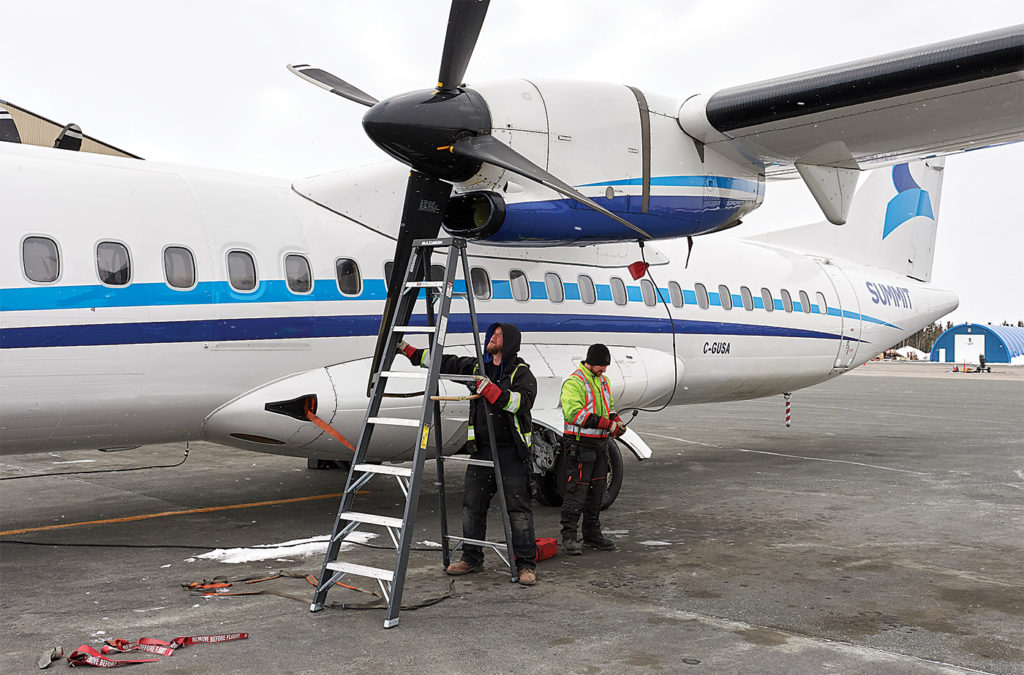
When it comes to the flying itself, Summit is a proponent of installing automated weather observing systems (AWOS) at all airports across the North.
“It’s not feasible to have all of these airports staffed 24/7, and AWOS systems have improved so much,” said Cane. “They are now quite reliable and hardware costs have come down. We’re of the opinion that AWOS should go everywhere and we should still have a human element in CARS stations for office hours.”
But while he feels better weather reporting is needed, Cane said Summit is well acclimated to northern weather and the challenges it presents.
“We’ve been able to adapt to that and our aircraft have good dispatch reliability, although newer-generation aircraft like the ATRs are not as forgiving when ‘operating out of a snowbank,'” he said. “They need to be heated for longer and treated more gently from a ground handling perspective than legacy aircraft.”
One of the big challenges the weather does present is aircraft icing. Following the crash of a West Wind Aviation plane at Fond du Lac, Sask., in December 2017, the Transportation Safety Board of Canada pointed to a lack of deicing equipment at remote northern airports as a serious safety hazard.
Cane agreed. While the mines are well equipped with deicing equipment, he said that’s not true of some isolated Arctic settlements.
“As a charter operator that goes to dozens of different communities, the economics aren’t there for us to put staff and equipment into every community,” he pointed out. “This is a problem across the North, and one we hope Transport Canada will assist with in coming up with solutions. We’re not unique – all charter air carriers experience this.”
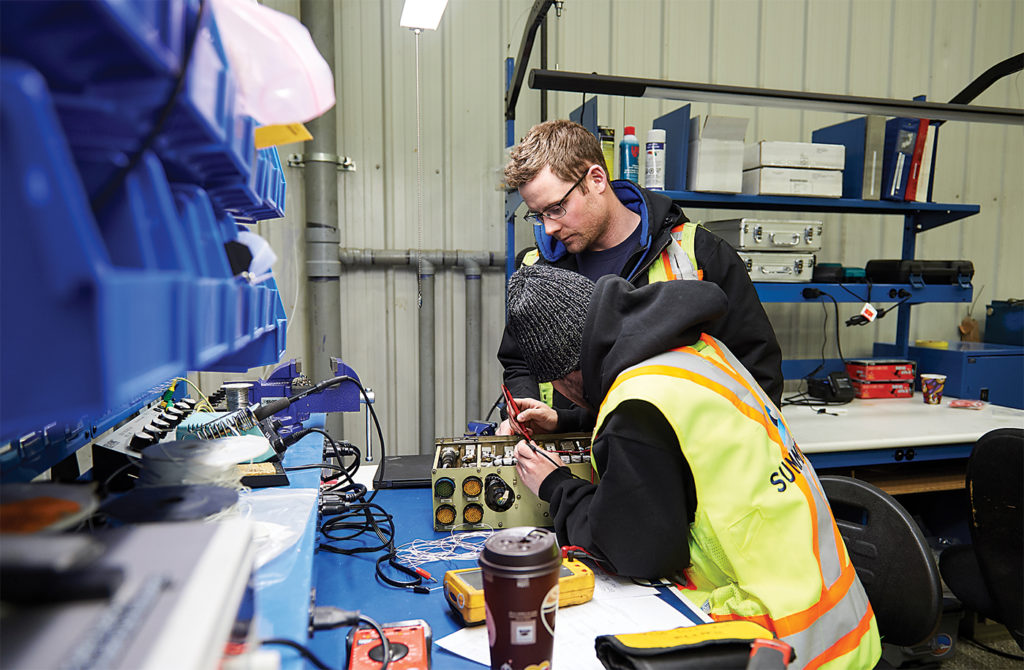
Finally, he fears Canada’s new fatigue risk management regulations are very prescriptive and worries they will unintentionally contribute to the trend of declining experience in the cockpit. As companies across Canada are required to hire more pilots to comply with the regulations, they will be forced to draw upon staffing pools with less and less experience.
Focus on partnerships
Despite its diversification in recent years, Summit Air remains attuned to the needs of what Cane called “lifelong customers.” He pointed to the company’s success delivering customized aviation services to several Aboriginal partners, including the Haisla Nation near Kitimat, B.C.; the Baffin and Kitikmeot regions of Nunavut; and its largest partnership with Det’on Cho Corporation.
“A key strategy for us has been finding efficient solutions for our customers; that has been a strength of the business,” emphasized Cane. “You have to help them out with their problems and come up with solutions. We look for opportunities that fit our business model and our appetite for risk.”
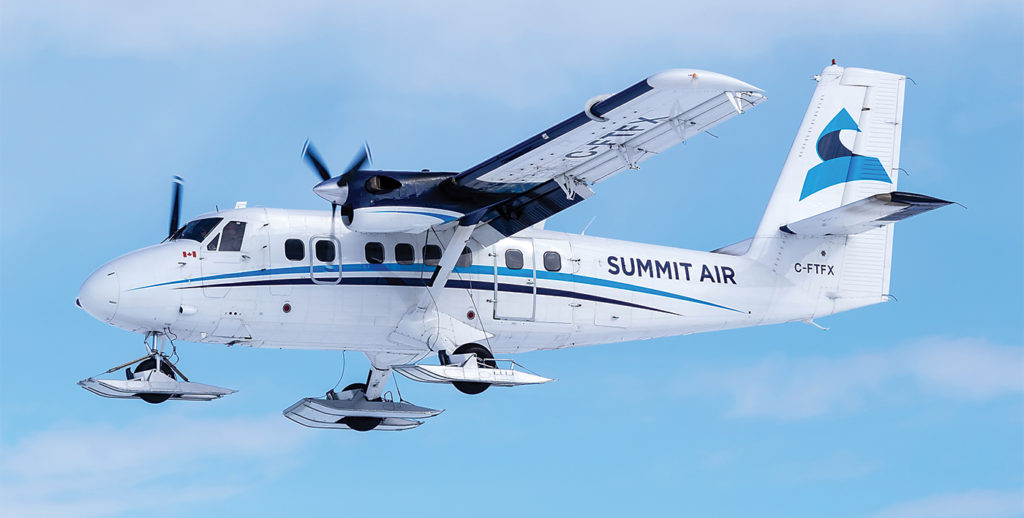
With the NWT predicted to venture into unexplored economic territory in the coming years, Summit Air is well positioned for expansion through opportunity.
“We want to continue working with our partners to bring value to their groups and help grow their portfolios,” concluded Cane. “We’re taking it to the next level.”
